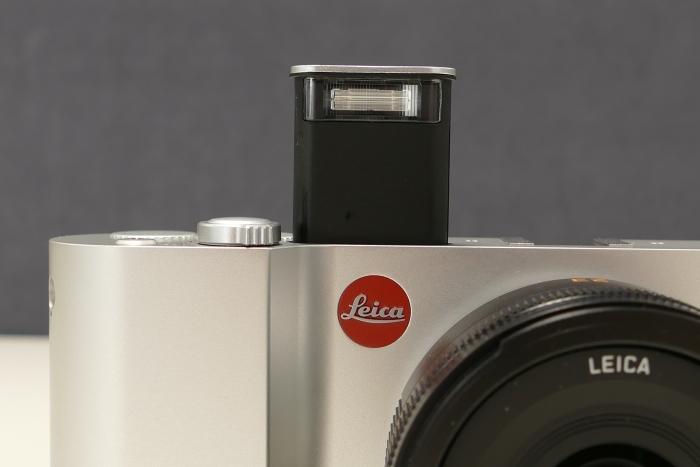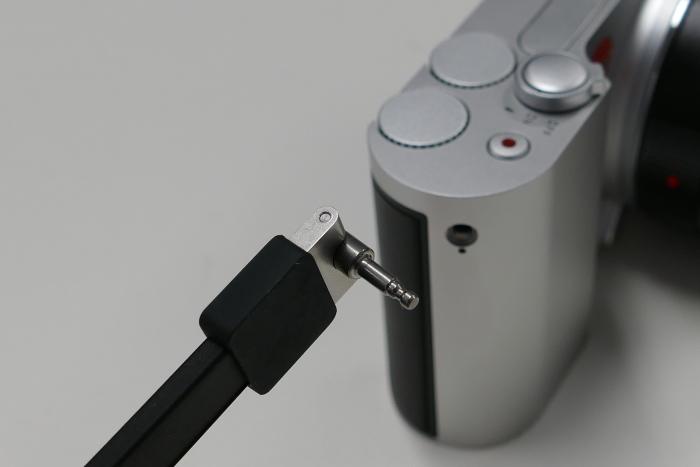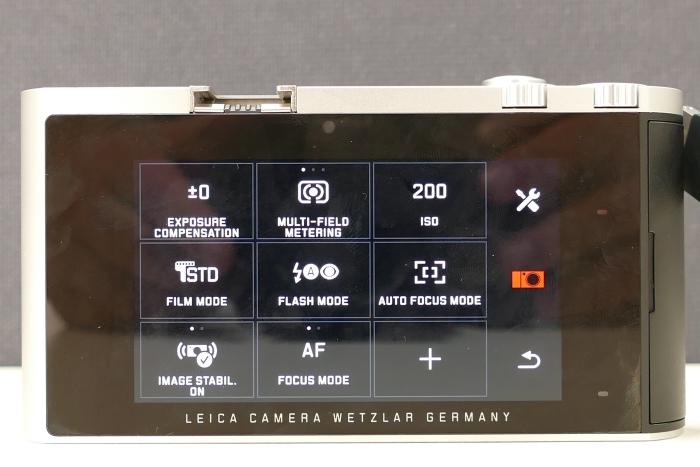
Leica T camera
One of the most stylish, well designed cameras you will ever meet
Pros
- Style
- Build quality
- Picture quality
Cons
- Expensive camera
- Expensive lenses and accessories
- Wi-Fi didn't work for us
Bottom Line
Leica's focus on creating a minimalist unit with a dominant touchscreen interface challenges us to re-think the way we interact with a camera's settings. For the most part, it works. You get used to this idea of on-screen control, and that's because the touch interface isn't an afterthought but a main feature.
-
Price
$ 2,300.00 (AUD)
The Leica T is the type of camera that can make you feel underdressed. It will make you kick off your Air Max sneakers in favour of some fresh Julius Marlow boots. It will make you ditch polo shirts for tucked-in button-downs, and it will make you want to find a proper-fitting pair of pants. You'll feel like a million bucks when you hold this camera in your hands, but the downside is that you almost have to be made of that much in order to afford it.
Nothing compares 2 u
You can't compare the Leica T to a traditional digital SLR or compact system camera. It has a different look and feel, thanks primarily to the way it has been constructed and laid out. Leica mills the body of the T from a 1.2kg solid block of aluminium, getting it down to 900g, then polishes it by hand for more than 40 minutes to ensure that the curves and edges are perfect.
There is a video by Leica on YouTube that's titled as being the 'most boring ad ever' (scroll down to see it), and it's a worker sitting there polishing a newly milled body. It makes you appreciate the way the camera has been crafted and sort of puts the high price into perspective. Then again, you are paying a lot for a prestigious brand, too.
The Leica T sure does have marvellous curves and edges, and the smooth finish just makes you want to hold it, even when you've no intention of using it. Much attention to detail has been paid to the elements that reside on the hefty body, including the red Leica badge at the front, and the etched labelling at the top. There is a pop-up flash next to the hot shoe that stands to attention when you pull the power switch past the on position.

On the sides, there are pinholes that release stainless steel pins, and these need to be removed if you want to attach the silicon strap accessory. With this accessory, there is no need to figure out how to work the buckles of a traditional strap, it simply plugs straight into the body and it adds to the overall classy style of the unit.

Then there is the battery compartment. It has been designed with a mechanism that continues to hold on to the battery after you initially release it, so that it doesn't fall to the ground. A subtle push with your fingers back in towards the body disengages the battery completely so that you can then place it in its charger, which is also designed with a tiny release mechanism. The battery is actually part of the body and sits flush with the bottom, rather than being held inside it by a door.


These are all fine details that you come to appreciate quite quickly, and they never get old. But apart from these details, and the quality of the milled body in general, the thing that stands out about the Leica T is its minimalist design. Only the bare essentials for the operation of the camera have been placed on the body itself, including the shutter button, power switch, video recording button, and two control dials that allow you to change the aperture and shutter values. Everything else, from changing shooting modes to playing back photos, needs to be undertaken through the large, 3.7in touchscreen on the rear.

The touchscreen
With touchscreens on many mainstream cameras, the only thing they are really useful for is touching to focus, and in some cases tapping to take a photo without having to use the shutter. We've never been fans of navigating through menus with our fingers to adjust settings, always preferring to use the D-pad. Our fear was that we would not enjoy touching the Leica's screen to get to the settings we wanted.
However, the touch interface on the Leica is unlike the touch interface on other cameras. For starters, the screen is larger and the camera has been designed with touch in mind. The interface actually reflects the screen's purpose, not only as a means through which to frame your photos, but also as the gateway to all the controls.
Instead of having a list of menus to scroll through, Leica has designed an interface that's dominated by square icons that are easy to tap. Some taps simply toggle a particular setting, while others bring up a list of options for you to choose from. It's intuitive, and it makes the lack of buttons on the body make sense.
To enable relatively easy access to common settings, there is a quick menu button that’s always visible on the right side of the screen. Its purpose is to hold all of the settings that you use on your regular shooting trips. You can add and remove icons from this menu with ease. Once it's configured properly, you can use it to quickly get to things such as the ISO setting, focus and metering modes, and anything else you tend to change on a regular basis.

But we were still sceptical about using such a system while out and about, not only because we thought it would take longer to change settings, but also because we might not be able to see the settings while out on a sunny day.
Reflections off the screen were not an issue, even while we used the camera out in the middle of a brilliantly sunny Sydney day that belied the fact we are meant to be in the throes of winter. It helps a lot that the menu's writing is white and located on a completely black backdrop. Settings could be seen and tapped easily. And it's a responsive screen too; rarely was there a need on our part to repeat an action due to the screen not recognising our touch.
Similar to the way Leica's bodywork is detailed, there are little details to be aware of in the interface, too. For example, in order to review photos, you have to swipe down from the top of the screen, rather than tap on a 'play' icon. This is one of the only settings for which you might have to consult the manual (the other is Wi-Fi). Meanwhile, the icons that are always visible to the right of the screen can be locked so that you don't inadvertently tap them with your right thumb while framing an image.
It seems as though Leica thought of everything when implementing this interface. When in a semi-manual mode and only one of the control dials is needed for aperture or shutter, the other control dial can be used to control up to six other functions. All you have to do is tap on the exposure box on the screen to select the function you want, whether it's ISO, exposure compensation or white balance, and then move the physical dial to change its settings.

One aspect of the interface that didn't always work for us was swiping down to review our pictures. Perhaps it was the way we swiped, but on many occasions we managed to change the focal point on the screen rather than view our already taken photos. This was quite annoying. Perhaps a playback icon in the quick menu might be a better option.
The camera is set to display the photos you take for a couple of seconds automatically, which can make the camera feel sluggish when you're trying to capture shots in rapid succession. That said, it's more of a landscape and portraits camera, rather than something you would use at a sports field or anywhere else the scene quickly changes. That will also depend on the lenses that you use, and how capable they are.
Unlike other cameras, there is no mode dial on the body of the Leica T. If you want to move between aperture priority, shutter priority, manual, and scene modes, you have to use the menu toggle that's present at the top-right of the screen. If you want to use the camera in auto mode, then you have to go into ‘scene mode’ and pick auto mode from there. But with a camera like this, half the fun is playing with the exposure to achieve different results. (The other half is just holding the camera, of course.)

One other thing we'll mention here is that the Leica actually has 16GB of built-in memory. That's perfect for those of us who tend to forget such details as loading an SD card before heading out for the day.
High image quality, but at a high price
We were sent a 23mm prime lens and an 18-56mm zoom lens for our test period, both of which are geared towards landscapes and portraits more than anything. They are part of the Leica T system. However, Leica also supplies an M-Adapter T, which allows over 20 Leica M lenses to be used on the T body, and the body is said to be able to detect which lens is attached so that all supported functions of the lens are enabled. By the end of the year, Leica will also have 11-23mm and 55-135mm zoom lenses, which will be priced similar to the current lenses (pricing is coming up, so make sure you're sitting down).
The lenses and accessories are part of a rich and expensive ecosystem for this camera, and you'll also have to be rich to play with them. Indeed, you will have to part with a lot of money to buy into the Leica T system, a lot more than you would a traditional digital SLR or compact system camera. To put it in perspective, the body alone costs $2300. The 18-56mm lens costs $2300 on its own, and the 23mm prime lens costs $2500. The silicon strap we mentioned earlier in this piece will set you back $100, while the lens adapter is $500. We also tested with the electronic viewfinder, which comes in at a cool $700. A kit bag for all this gear costs $400.
From these prices, you can tell that the Leica T is for those of you who can enjoy and afford the finer things in life. It’s not a camera that’s going to appeal to a lot of users, but it will find its way into the hands of pros who perhaps already have many Leica lenses to attach to it, as well as camera aficionados who simply must have the best.
Its picture quality is as detailed as any other camera we've seen this side of a professional digital SLR. Leica uses a 16-megapixel CMOS sensor from Sony, and the results you can attain when you know what you are doing are superbly clear. Colours are captured with a neutral bent when using JPEG mode and the 'standard' colour mode, but there is a ‘vivid film’ mode that can be used to really saturate your images and make them come alive. Of course, you can also capture in RAW mode and tweak the images on a computer as you see fit.


Focusing was a little hit and miss in our tests. For close-range shots, we had to be mindful of the minimum distance required to focus with each lens, so we couldn't always get as close as we wanted to our subject, but even shots from far distances sometimes missed the mark. We found the best way to focus was to select the focus point manually, tapping on the area that we wanted to appear in focus. Once we got it right, the bokeh effect from the 23mm lens in particular was something that we adored.

Indoors, the camera's ISO can be pumped up to 1600 and even 3200 to good effect, which, in conjunction with a wide aperture can allow you to use a regular shutter speed and handhold the camera without blurring your picture. The shutter has a noticeable feel when a picture is taken, and it makes a beautiful sound.


We used the camera both with and without the electronic viewfinder, but preferred the latter for the majority of our shots, mainly because we love the fact that it swings up and allows you to look down into the camera. This can put a new perspective on your photographs. It's one of those physical features that can really make photography fun, and you can spend a lot of time concentrating through this viewfinder and framing your photos just the way you want.
Final thoughts
The design and attention to detail aren't the only things that set this camera apart from regular interchangeable lens cameras and digital SLRs. Leica's focus on creating a minimalist unit with a dominant touchscreen interface challenges us to re-think the way we interact with a camera's settings. For the most part, it works. You get used to this idea of on-screen control, and that's because the touch interface isn't an afterthought but a main feature.
As for the camera's image quality, it's sensational, as expected, and you can really get some crisp and interesting results if you know how to handle it properly. It's a camera for those of you who are pros, those of you who already have a cache of Leica lenses to use, or those of you who dress well and are looking for a camera that will impress. For the rest of us, the expense is too great to ignore.
The most boring ad ever made?
Related content
• Sony's Cyber-shot RX100 III is a good option if you want high image quality and built-in features in a super-small body.
• Need a camera with more zoom, 4K video shooting, and don't mind a bigger size? If so, check out the Panasonic Lumix DMC-FZ1000.
• Want a mainstream interchangeable lens camera? Sony's a5000 is a small camera that allows you to attach the lens of your choice.
• If you're after a more professional, yet well-sized camera, the Fujifilm X-T1 is a fine choice.
• Thinking of upgrading to a full-frame camera? Nikon's Df is a great place to start.
Brand Post

Most Popular Reviews
- 1 Dell U3223QE review: A winning debut for an IPS Black monitor
- 2 HP Spectre x360 16 review: The right 2-in-1 at the wrong time
- 3 Acer K242HYL review: An affordable monitor for any occasion
- 4 GeForce Now review: You bring the games, Nvidia streams the hardware
- 5 Asus ProArt PA279CV monitor review: The go-to for content creators on a budget
Latest News Articles
- Apple offers 6 months free Apple Music, Keynote holiday greeting card templates
- Adobe expands Creative Cloud M1 support, claims over 80% better performance than Intel
- GoPro delivers Quik solution for videos and photos
- Got a GoPro Hero 8? You can use it as a webcam for your Mac
- Canon embolden mirrorless offering with EOS R5 and R6
Resources
Macworld
What's new, plus best mac-related tips
and tricks

Business Centre
The latest business news, reviews, features and whitepapers

Videos
Watch our video news and reviews from around the world

Guides
Comprehensive buying guides, features, and step-by-step articles

PCW Evaluation Team
Pedro Peixoto
Aruba Instant On AP11D

Set up is effortless.
Cate Bacon
Aruba Instant On AP11D

The strength of the Aruba Instant On AP11D is that the design and feature set support the modern, flexible, and mobile way of working.
Dr Prabigya Shiwakoti
Aruba Instant On AP11D

Aruba backs the AP11D up with a two-year warranty and 24/7 phone support.
Tom Pope
Dynabook Portégé X30L-G

Ultimately this laptop has achieved everything I would hope for in a laptop for work, while fitting that into a form factor and weight that is remarkable.
Tom Sellers
MSI P65

This smart laptop was enjoyable to use and great to work on – creating content was super simple.
Lolita Wang
MSI GT76

It really doesn’t get more “gaming laptop” than this.
Featured Content
- Which Lenovo Laptop Should I Buy?
- Every TV in Samsung's 2022 line-up: OLED, Neo QLED and more!
- Top 10 best Android and Apple phones for under $600
- Everything you need to know about Smart TVs
- What's the difference between an Intel Core i3, i5 and i7?
- Laser vs. inkjet printers: which is better?










